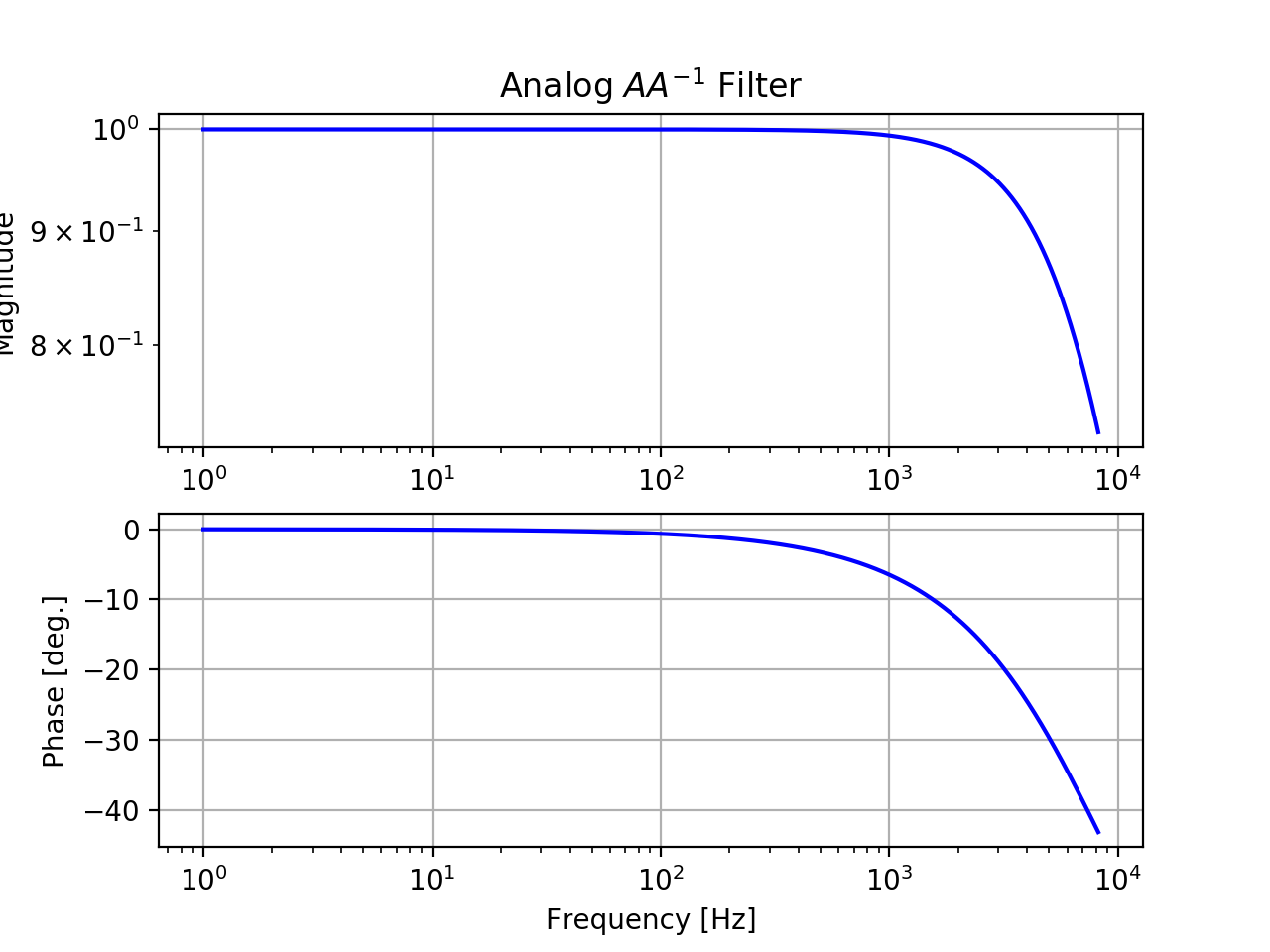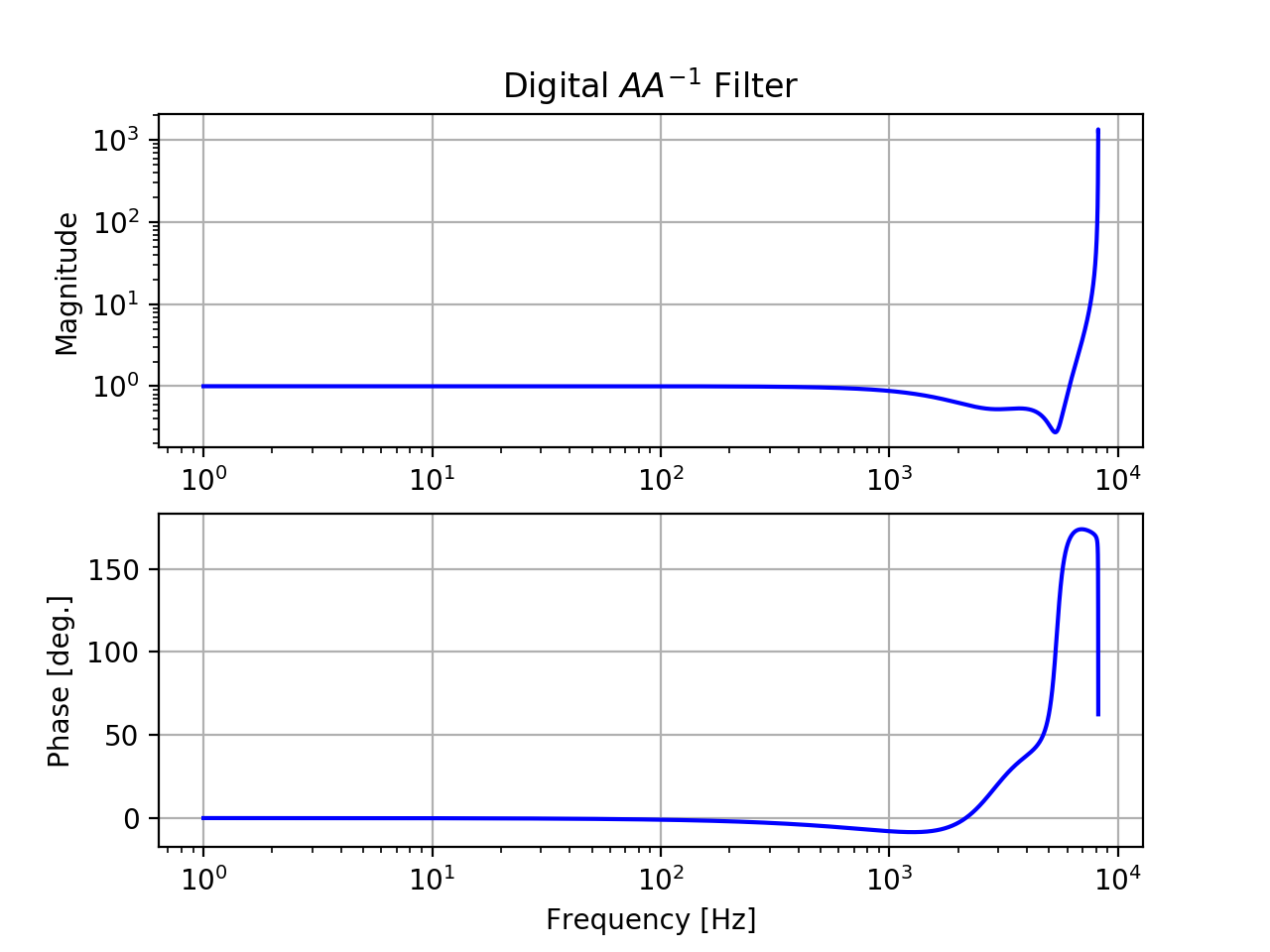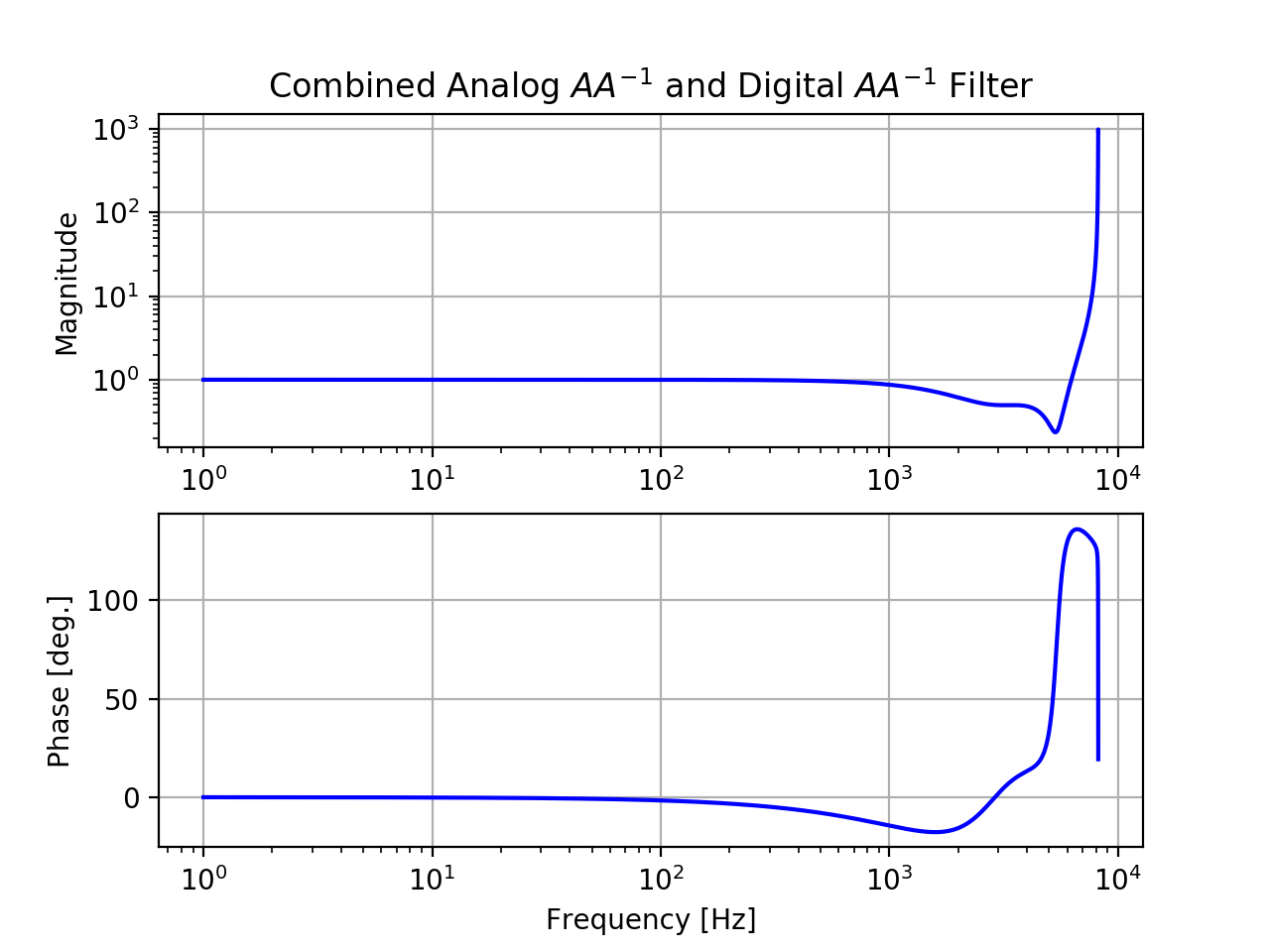Step 6a: Make FIR
This tutorial describes how a time-domain filter can be created based on theoretical Z, P and K values. In particular, a process of generating a combined response of the inverse analog and digital anti-aliasing (AA and dAA) filters is shown. <ul>
The python script that implements the process described on this page is based on "Step 6".</li> <li>Responses of the AA-1 and dAA-1 are expressed with zeros and poles as follows:
- * Inverse of the analog AA filter:
- Zeros: [7680.37]
- Poles: [8190, 8190]
- * Inverse of the digital AA filter:
- Zeros: [1272.9+1j*2600.52, 1272.9-1j*2600.52, 352.852+1j*5384.07, 352.852-1j*5384.07]
- Poles: [6.14865+1j*8190, 6.14865-1j*8190, 6000, 6000, 6000]
- * Inverse of the analog AA filter:
- In a python script these parameters are described as follows (the example shows the analog AA parameters):
# inverse of the analog Anti-Aliasing (AA^-1) dsgn_AA_z = [7680.37] dsgn_AA_p = [8190, 8190]
- The scipy.singal package can be used to create an LTI object with these parameters. Below is a python function that creates an LTI object from zeros and poles expressed in Hz and a gain:
def myZPKhz(z, p, k):
z2pi = [-2 * np.pi * x for x in z]
p2pi = [-2 * np.pi * x for x in p]
g = k * np.prod(p2pi) / np.prod(z2pi)
return sg.lti(z2pi, p2pi, g)E.g. an LTI system of the AA-1 is creates as shown below:
dsgn_AA = myZPKhz(dsgn_AA_z, dsgn_AA_p, 1.0)
- One can obtain frequency response from an LTI object and generate FIR filter coefficients of a corresponding time-domain filter. These steps are described in a previous tutorial.
- Scripts for this tutorial were committed to kagra-cal repository at "gstlal-kagracal/tests/TDFilters/*"
Output
- The script "td_genFIR_AA_dAA" calculates FIR filter coefficients and saves them in an ".npz" file.
Frequency responses of AA-1 and dAA-1 and the two combined are shown below:



